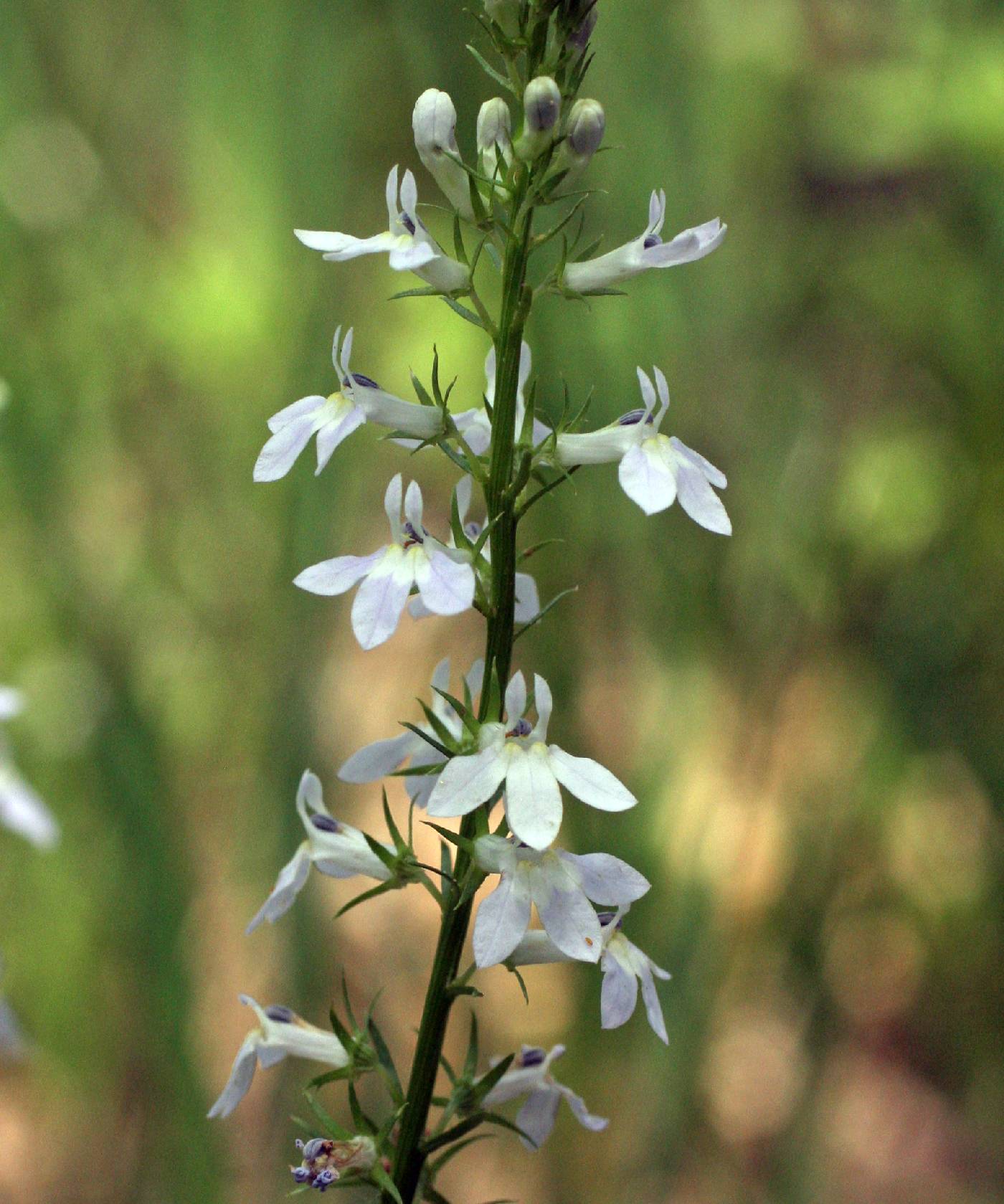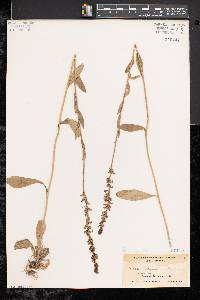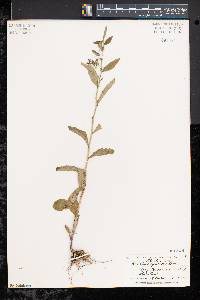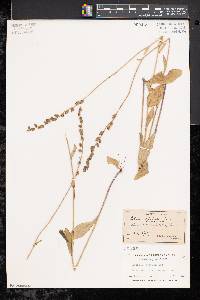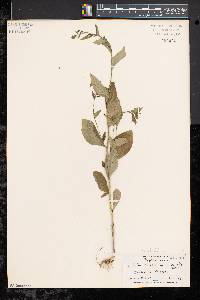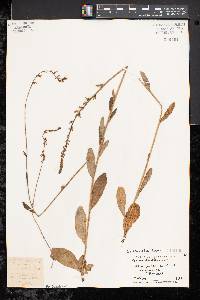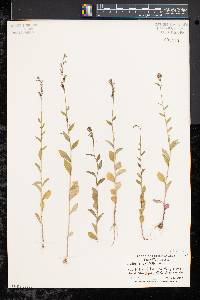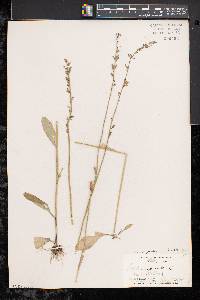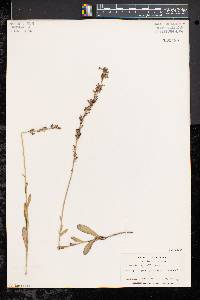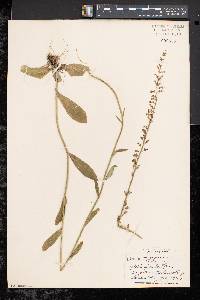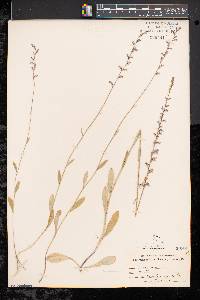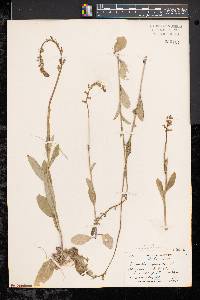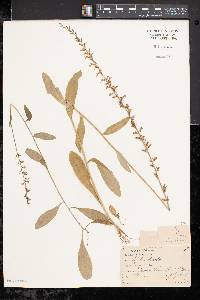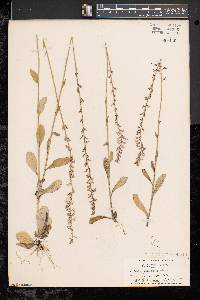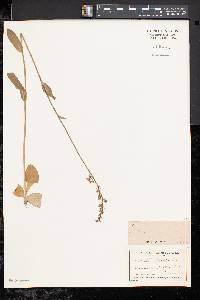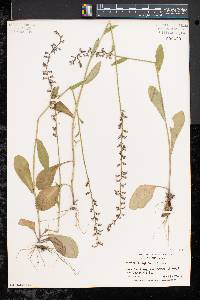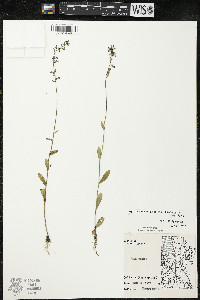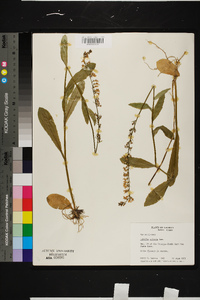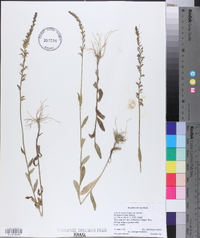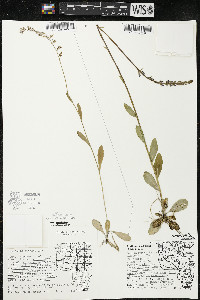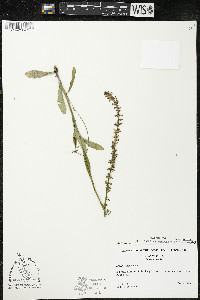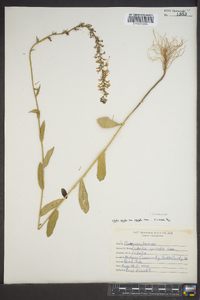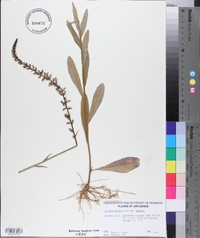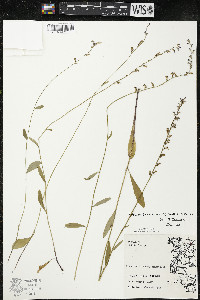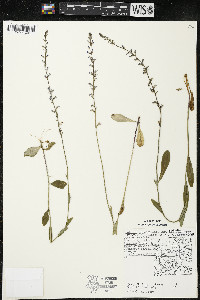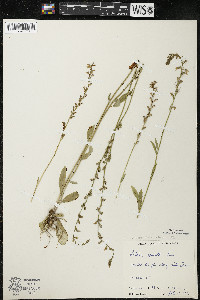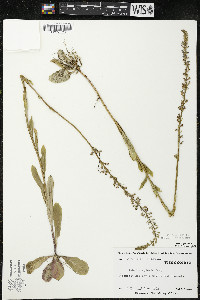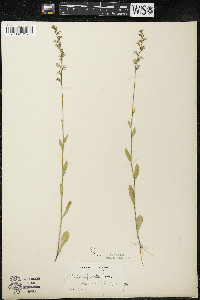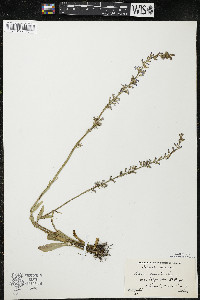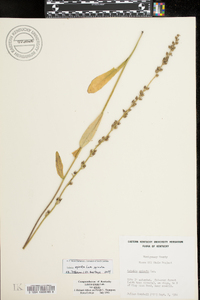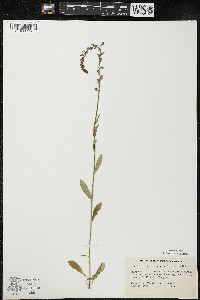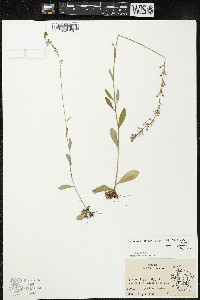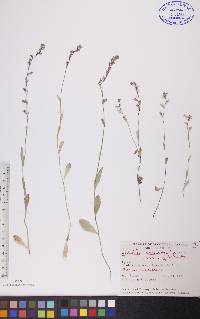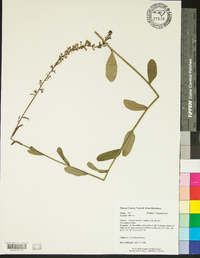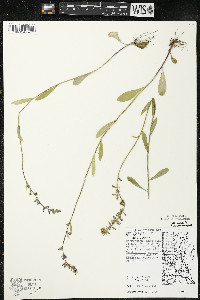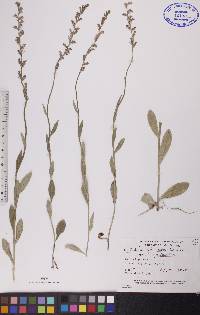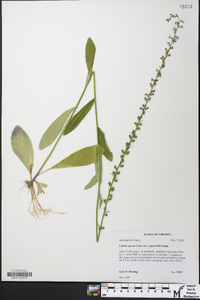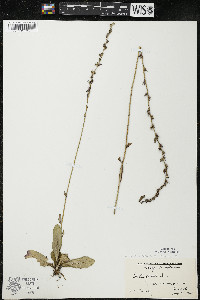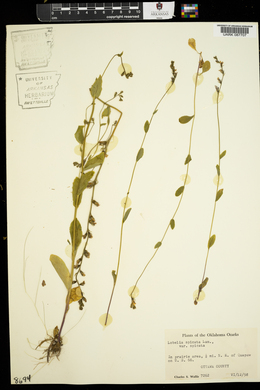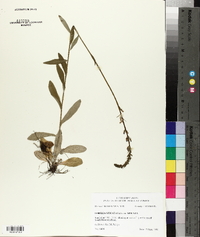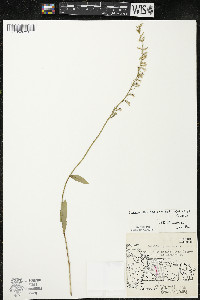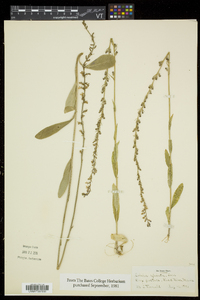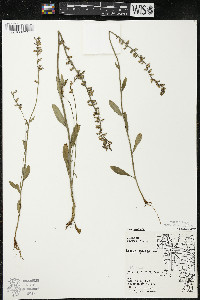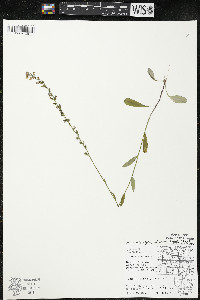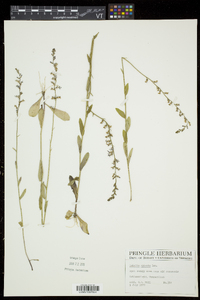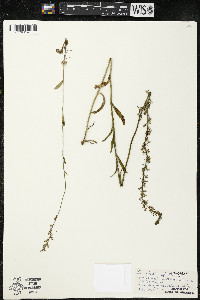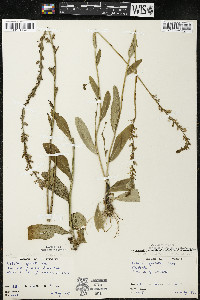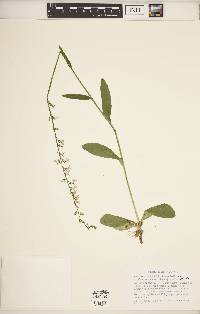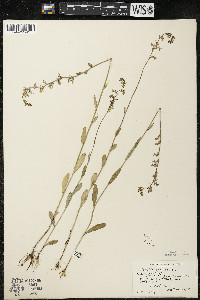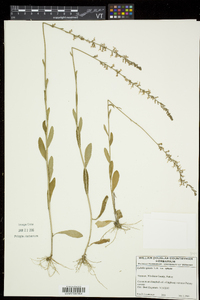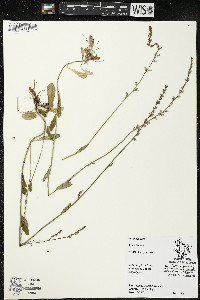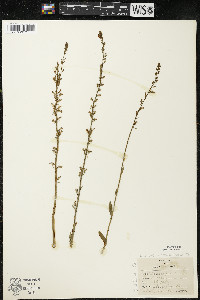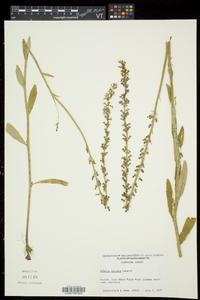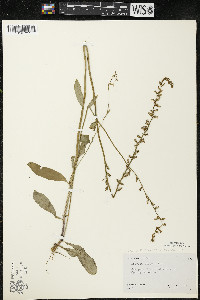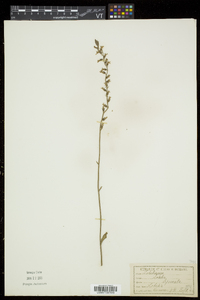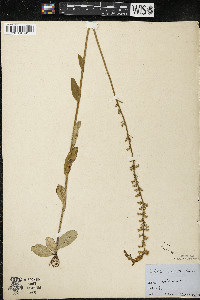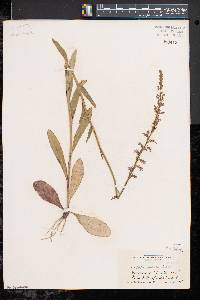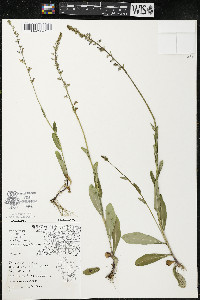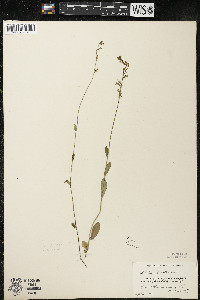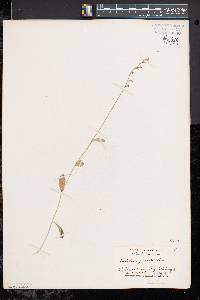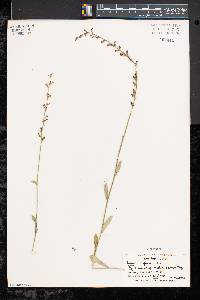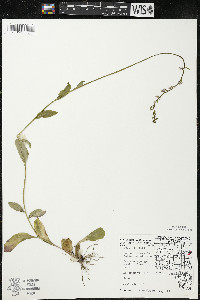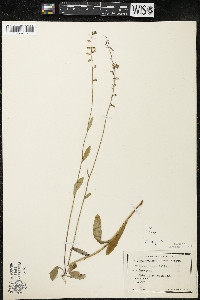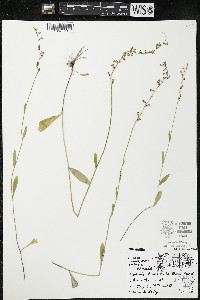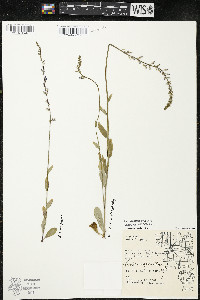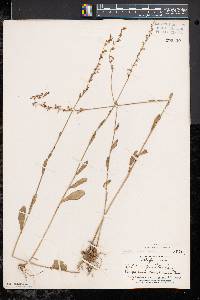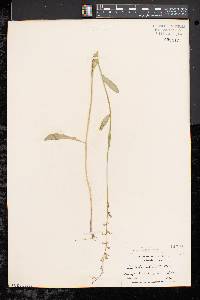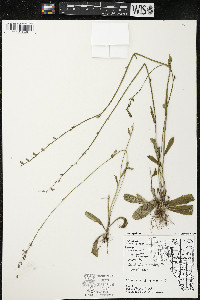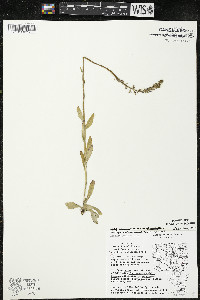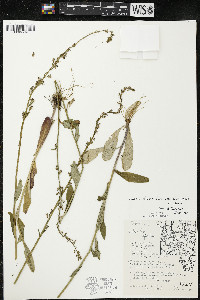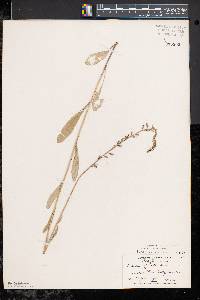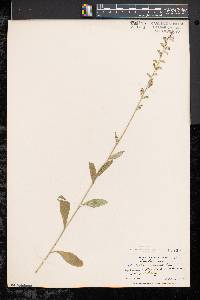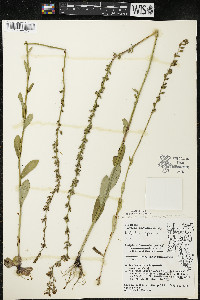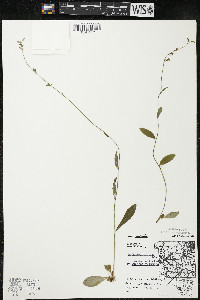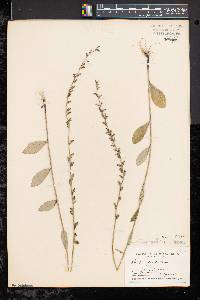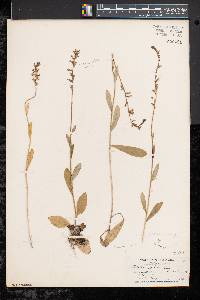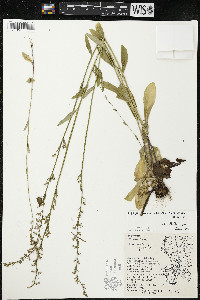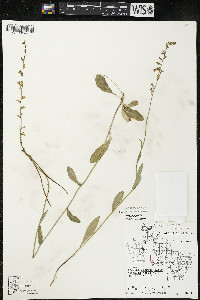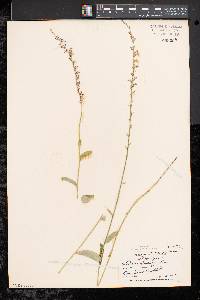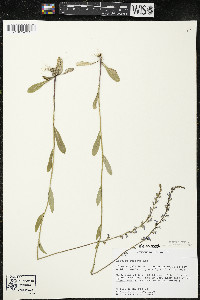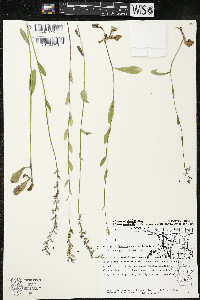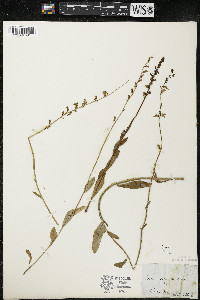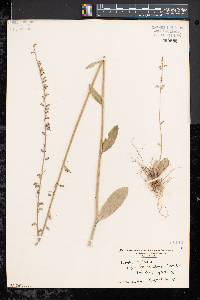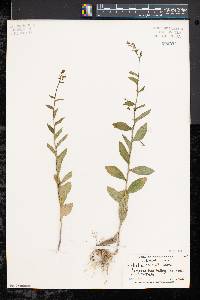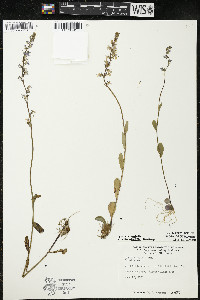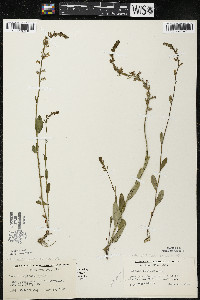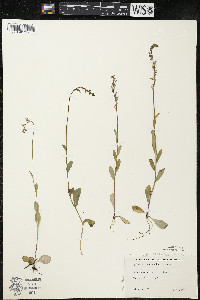Lobelia spicata var. spicata
|
|
|
|
Family: Campanulaceae
Pale-Spike Lobelia
|
Perennial herb 30 cm - 1 m tall Stem: unbranched, erect, often short-hairy at base and becoming less hairy or hairless upwards. Leaves: alternate, ascending to spreading, stalkless, often hairless, becoming smaller upwards, inversely lance-shaped to elliptic, narrowed at base with some basal leaf tissue continuing onto stem (decurrent). If basal leaves are present, they are about the same size as the stem leaves. Inflorescence: a single, terminal, unbranched, slender, very tall (more than 30 cm), dense, spike-like cluster of flowers, each on short (2 - 5 mm) stalks in axils of hairless, lance-shaped or linear bracts. Aside from the narrow subtending bracts, each flower stalk has two, tiny bracts (bracteoles) at their base. Flowers: pale blue to white, 0.7 - 1.1 cm long, bilaterally symmetric, with two-lobed upper lip and three-lobed lower lip. The flowers are actually flipped upside down so that the morphologic upper lip (of three spreading lobes) appears on the bottom of the flower, and the two shorter and erect lobes at the top of the flower are actually the morphologic lower lip. Sepals: five, but fused at very base, then separating into five, hairless or sometimes finely hairy, long (over twice length of tube), narrowly lance-shaped lobes, which may have minuscule ear-like appendages (auricles) between lobe bases. Petals: five, but fused at base into a tube, then separating into two lips. The "upper" lip (morphologic lower) has two, erect, narrow lobes with a beard of hairs near their base, while the "lower" lip (morphologic upper) has three, much wider, elliptic, pointed-tipped, spreading lobes. Stamens: five, but fused into a tube with pale blue-gray fused anthers, two of which are bearded at tip and shorter than other three. Pistil: with a two-chambered, inferior ovary; one long style positioned through center of stamen tube; and a two-lobed, often fringed stigma. As the style elongates up through the stamen tube, it pushes the pollen out of the anthers. Fruit: several, two-chambered, short, hemispherical, many-seeded capsules, which open at top. The united portions of the sepals and petals enclose the capsule and may become slightly inflated (or not) as the fruit matures. Similar species: This is the most common form of Lobelia spicata in our area. Lobelia spicata var. hirtella differs by being smaller overall, and rough-hairy throughout, including on the inflorescence bracts and sepal lobes. Lobelia spicata var. leptostachys differs by having appressed leaves, and obvious (normally over 1 mm long), deflexed and thin ear-like appendages (auricles) between the sepal lobes. Other species that may be confused with L. spicata include L. kalmii, but that species has linear and hairless stem leaves, the bracteoles are located near the middle of the flower stalk, and the sepal lobes are usually shorter than twice the tube length. Another species this could be confused with is L. inflata, but that species usually has stem leaves that are widest near the base, the inflorescence is branched, there are no auricles on the sepal tube, and the tissue around the fruit is greatly inflated. Flowering: May to August Habitat and ecology: Occasional in the Chicago Region, mostly found in prairies, sometimes in low prairies and prairie fens. Occurence in the Chicago region: native Notes: This is the most common variety of L. spicata in the Chicago Region and the eastern United States in general. Author: The Field Museum From Flora of Indiana (1940) by Charles C. Deam McVaugh says: "This is a species with at least five well defined phases," four of which occur in Indiana. [Generally anthers in this species are blue. White anther forms, which also tend to have fewer flowers per raceme, Deam calls var. campanulata.] This extremely local and widely distributed plant is found in dry, open woods in Clark, Lagrange, and Lake Counties. Our Clark County station is the southern limit of its range in the United States. [Plants with ciliate calyx lobes have been called var. hirtella. According to Deam these are] local in prairie habitats or in marly, springy places in northern Indiana. [Variety spicata, which has non-ciliate calyx lobes, blue anthers, and many-flowered racemes,] is very local. My specimens are from dry, gravelly oak slopes in Lagrange, Steuben, and Warren Counties, and from an interdunal flat in Lake County. [See also L. spicata var. leptostachys.] .…… Indiana Coefficient of Conservatism: C = 7 Wetland Indicator Status: FAC |

